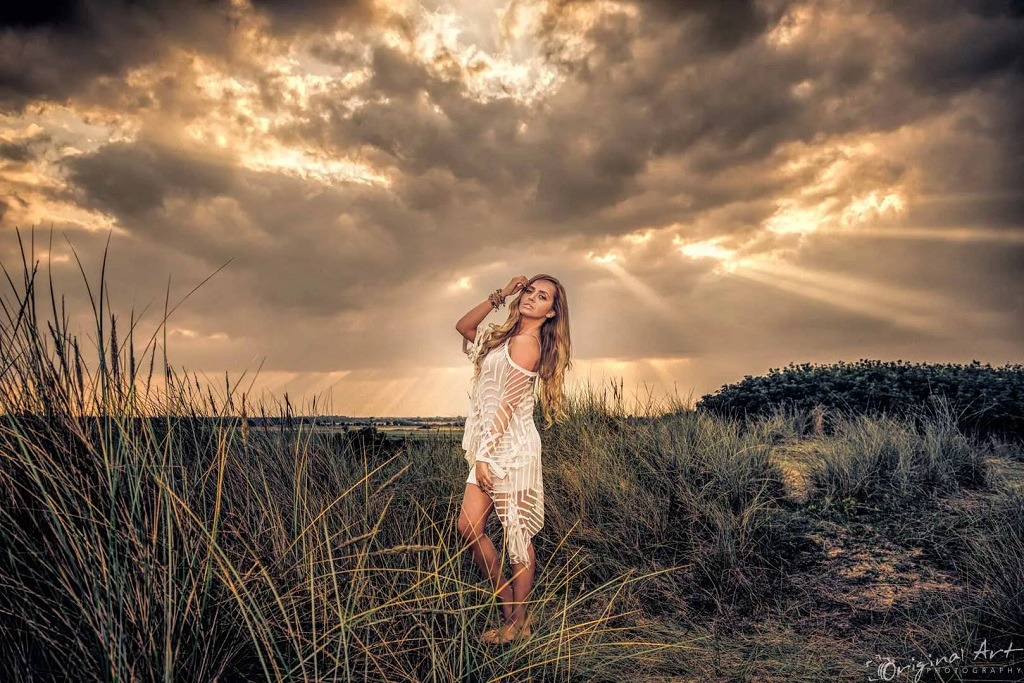Depth of field (DOF) is one of the most powerful tools in a photographer’s arsenal, capable of transforming an ordinary portrait into a breathtaking work of art. Whether you’re aiming for a dreamy, blurred background or a tack-sharp image from foreground to background, mastering DOF can take your photography skills to the next level. Many professional photographers rely on it to control focus, create mood, and guide the viewer’s eye to the subject.
If you’ve ever admired a portrait where the subject seems to pop off the background with stunning clarity, you’ve witnessed the magic of a shallow depth of field. On the other hand, a deep depth of field ensures everything in the frame is in focus, ideal for environmental portraits that tell a story beyond the subject.
In this guide, we’ll explore how to control DOF to craft dramatic portraits, break down the science behind it, and share expert tips used by top photographers. Plus, if you’re looking for innovative photography tools, you can explore Goo Photo for resources that can elevate your portrait game.
The Science Behind Depth of Field: How It Works
Before diving into techniques, it’s essential to understand what depth of field actually is. DOF refers to the range of focus in an image—the distance between the nearest and farthest objects that appear acceptably sharp.
Several factors influence depth of field:
- Aperture (f-stop): A wider aperture (e.g., f/1.8) creates a shallow DOF, blurring the background and foreground, while a narrower aperture (e.g., f/11) increases DOF, keeping more of the scene in focus.
- Focal Length: A longer focal length (e.g., 85mm or 135mm) compresses the background and enhances subject separation. Shorter focal lengths (e.g., 35mm) naturally create more depth in an image.
- Distance Between Subject and Background: The further your subject is from the background, the more blurred the background appears.
- Camera Sensor Size: Larger sensors (like those in full-frame cameras) produce a shallower depth of field compared to smaller sensors (such as those in crop-sensor or smartphone cameras).
Creating Dramatic Portraits with Depth of Field
Choosing the Right Aperture for Portraits
One of the most critical decisions in portrait photography is selecting the appropriate aperture. If you’re looking to achieve that beautiful, creamy background blur (also known as bokeh), opt for a wide aperture like f/1.4 or f/2.8.
However, aperture choice depends on the style and mood you want to convey. A few common scenarios include:
- Shallow DOF (f/1.4 – f/2.8): Perfect for headshots where you want to isolate the subject and blur out distractions.
- Moderate DOF (f/4 – f/5.6): Useful for group portraits, ensuring everyone remains in focus while still softening the background slightly.
- Deep DOF (f/8 – f/11): Best for environmental portraits where you want to capture both the subject and their surroundings in sharp detail.
Focal Length and Its Impact on Portraits
Lens choice plays a huge role in controlling DOF and perspective.
- 85mm – 135mm (Telephoto Lenses): These lenses are the gold standard for portrait photography because they naturally compress the background and create stunning subject separation.
- 50mm (Standard Lens): Often referred to as the “nifty fifty,” this lens is great for natural-looking portraits with a balanced depth of field.
- 35mm (Wide-Angle Lens): Useful for environmental portraits but requires careful composition to avoid distortion, especially in close-up shots.
By selecting the right lens and positioning your subject strategically, you can create portraits with dramatic depth and storytelling impact.
Read More: Road Trip Tips for Families: From Mile Markers to Memories
The Role of Background in Enhancing Depth of Field
Even with the perfect camera settings, your background plays a crucial role in how your depth of field appears. Choosing a clean, uncluttered background enhances subject isolation. Soft, natural elements like trees, brick walls, or bokeh-friendly lights can add dimension without distracting from the subject.
For example, if you want to see how DOF can enhance mood and aesthetic, check out these sepia photography examples that showcase the timeless appeal of classic portraiture.
Pro Techniques for Mastering DOF in Portraits
- Use Foreground Elements: Positioning objects slightly in front of your subject (like leaves, glass, or fabric) can create an added sense of depth.
- Shoot Through Objects: Using elements like doorways, fences, or translucent fabrics can frame your subject creatively while softening edges.
- Experiment with Lighting: Soft, diffused lighting enhances the effect of depth by creating subtle gradations of shadow and highlight.
- Utilize Manual Focus: Autofocus can sometimes struggle with shallow DOF. Using manual focus ensures your subject’s eyes remain tack-sharp.
Common Depth of Field Mistakes to Avoid
Even seasoned photographers can make mistakes when working with depth of field. Some of the most common errors include:
- Using an Aperture That’s Too Wide: While f/1.2 looks beautiful, it can sometimes make it difficult to get both eyes in focus, especially in close-up portraits.
- Not Considering Subject Movement: A shallow DOF requires precision—if your subject moves slightly, they might fall out of focus.
- Ignoring Background Composition: A blurred background should still be visually appealing. Cluttered or distracting elements can take away from the overall effect.
Conclusion
Mastering depth of field is essential for creating stunning, professional-level portraits. By understanding the relationship between aperture, focal length, and background, you can craft images that captivate and tell a compelling story. Whether you’re aiming for soft, dreamy bokeh or sharp environmental portraits, thoughtful use of DOF can elevate your shots. Discover life events you need a photographer and capture unforgettable moments beautifully.
Experiment with different lenses, lighting conditions, and subject distances to refine your style. With practice and creativity, you’ll be able to produce portraits that leave a lasting impact.
FAQs
1. What is the best aperture for portrait photography?
The best aperture depends on your desired effect. For blurred backgrounds, use f/1.4 to f/2.8. For sharper group shots, opt for f/4 to f/5.6.
2. How does sensor size affect depth of field?
Larger sensors (like full-frame cameras) produce a shallower depth of field compared to crop sensors, making them ideal for portraits with creamy bokeh.
3. Can I achieve a shallow depth of field with a smartphone?
Yes! Many smartphones have portrait modes that simulate shallow DOF. Using longer focal lengths and getting closer to your subject can enhance the effect.
4. What is the difference between bokeh and depth of field?
Bokeh refers to the quality of the out-of-focus areas, while depth of field determines how much of the image is in focus. A shallow DOF creates strong bokeh effects.
5. How do I keep my subject in focus with a shallow depth of field?
Use single-point autofocus on the eyes, shoot in burst mode, and ensure your shutter speed is fast enough to counteract small movements.
By implementing these expert insights, you’ll transform your portrait photography and create images that stand out with striking depth and emotion.





